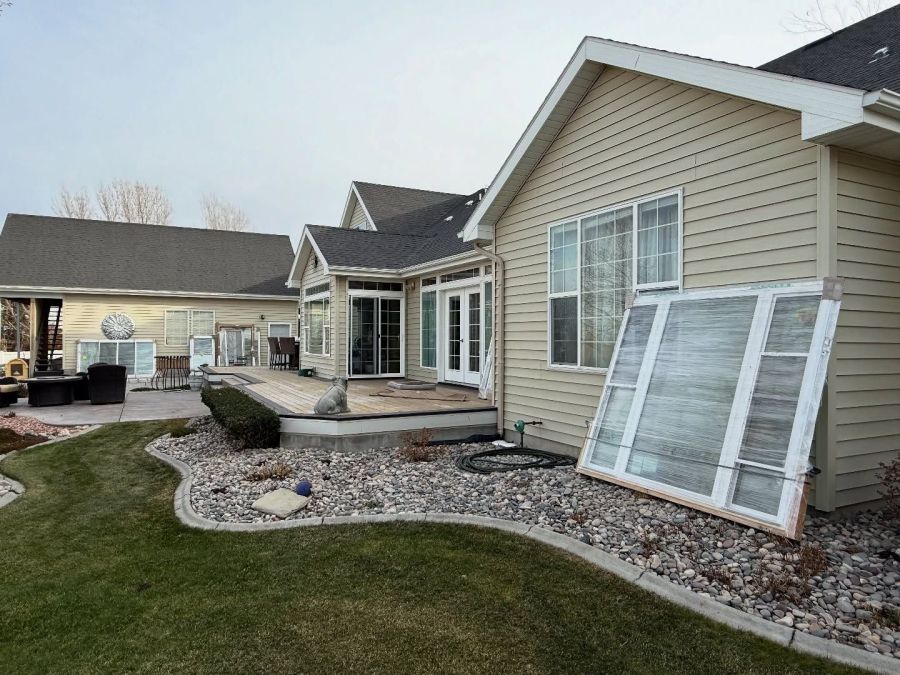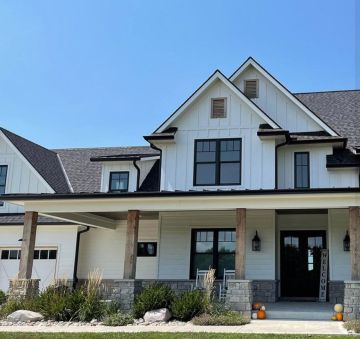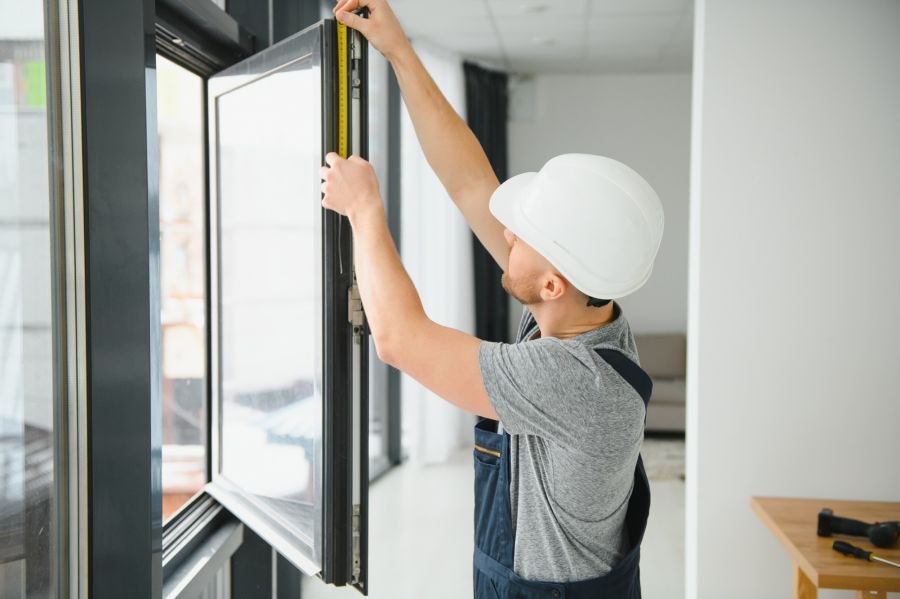Idaho's Quick Guide to Eco-Friendly Windows: Save Money & Go Green!
Thinking about new windows? It's a smart move! Eco-friendly windows don't just help the planet; they can save you money on energy bills, make your Idaho home more comfortable, and even boost its value. Let's look at what makes a window a great choice for you and for Idaho's environment.
Idaho's weather, with its cold winters and hot summers, makes good windows essential. Old windows can leak a lot of energy, meaning higher bills and a drafty house. Upgrading is a big deal – it’s an investment that pays off in many ways. Even if you don't know anything about windows, this guide will help.
New windows work quietly every day to cut down on heating and cooling costs, which are big energy users. This means a smaller carbon footprint for your home. Since homes contribute to Idaho's greenhouse gas emissions, every efficient window helps.

Window Shopping 101: What Idaho Buyers Need to Know
Window terms can sound like a foreign language, but a few key ratings will help you choose wisely for Idaho.
 The NFRC Label: Your Window's "Energy Scorecard"
The NFRC Label: Your Window's "Energy Scorecard"
Look for the National Fenestration Rating Council (NFRC) label on windows. It’s like a "nutrition facts" label, giving unbiased ratings so you can compare products fairly. Here’s what to check for:
-
U-factor: Measures how well a window keeps heat in. Lower is better, especially for Idaho winters. Aim for 0.30 or less.
-
Solar Heat Gain Coefficient (SHGC): Measures how much sun heat a window lets in. Lower means less heat, good for summer cooling. In Idaho, a slightly higher SHGC can be good on south-facing windows to get free winter sun. SHGC ranges from 0 to 1.
-
Visible Transmittance (VT): How much light comes through. Higher means more natural light.
-
Air Leakage (AL): How much air leaks through. Lower is better for fewer drafts. Look for 0.30 CFM/SQ ft or less.
ENERGY STAR® for Idaho: What Numbers do You Need?
ENERGY STAR is a government program highlighting energy-efficient products. Idaho is mostly in the Northern and North-Central climate zones and here is the guide for these areas:
-
Northern Zone (most of Idaho): Needs U-factor ≤ 0.27. SHGC can be "Any," allowing for passive solar gain in winter.
-
North-Central Zone (some parts of Idaho): Needs U-factor ≤ 0.30 and SHGC ≤ 0.40.
Idaho Power generally suggests ENERGY STAR windows with U-factor ≤ 0.30 and SHGC ≤ 0.30.5
Top Tier: ENERGY STAR® Most Efficient
For the very best, look for "ENERGY STAR Most Efficient." These windows offer peak performance and often qualify for tax credits. For 2025, in Idaho's zones, this generally means a U-factor ≤ 0.20.
 Key Features for Great Idaho Windows
Key Features for Great Idaho Windows
The window's parts—glass, coatings, frame—drive its performance.
Glass & Coatings: The Efficiency Core
-
Double vs. Triple-Pane:
Replacing single-pane with double-pane windows is a basic, effective upgrade. They have two glass layers, reducing heat transfer. Triple-pane windows (three layers) offer even better insulation and soundproofing, great for Idaho's coldest spots or noisy areas. They cost about 10-15% more than double-pane, potentially saving an extra 2-3% on annual heating. Decide if the extra cost is worth it for your situation.
-
Low-E Coatings: Smart for Sun and Cold:
Low-emissivity (Low-E) coatings are invisible metallic layers that reflect heat, keeping heat inside in winter and outside in summer.
-
Gas Fills (Argon & Krypton) & Warm-Edge Spacers:
The space between panes is often filled with argon or krypton gas, which insulates better than air. Argon is common; krypton is better but pricier. -
Insulated Sashes:
The sash holds the glass. Insulated sashes (with foam or multiple chambers) reduce heat loss through the frame.
Frame Materials: Finding the Right Fit for Idaho
The frame material affects efficiency, durability, maintenance, and looks. Stability against Idaho's temperature swings is key.
-
Vinyl (PVC):
-
Pros: Affordable, good insulation (if multi-chambered), low maintenance.
-
Cons: Can warp/degrade in extreme temperatures if lower quality, limited colors, environmental concerns with PVC. Lifespan: 20-40 years.
-
-
Wood:
-
Pros: Great insulator, beautiful, customizable. Renewable if FSC-certified (Forest Stewardship Council).
-
Cons: More expensive, needs regular maintenance (painting/staining) to prevent rot/warping. Lifespan: 30-60+ years with good care.
-
-
Fiberglass:
-
Pros: Very durable, stable in temperature changes (great for Idaho!), energy-efficient (can be insulated), low maintenance, paintable, long lifespan, often has recycled content.
-
Cons: Higher initial cost.
-
-
Aluminum (with Thermal Breaks):
-
Pros: Strong, lightweight, low maintenance, recyclable.
-
Cons: Poor insulator unless it has thermal breaks (insulating material within the frame).
-
-
Composite:
-
Pros: Blend of materials (e.g., wood fibers and polymers), durable, low maintenance, good efficiency, can look like wood, may use recycled content.
-
Cons: Can be pricier than vinyl, quality varies, dark colors might fade.
-
Frame stability is crucial in Idaho. Fiberglass and composites tend to handle temperature swings best, maintaining seals and efficiency.
Replacement Window Comparison for Idaho:
How New Windows Help Idaho's Environment
Eco-friendly windows make a real difference.
Greener Materials
-
Recycled Content: Many frames use recycled materials. Aluminum is highly recyclable. Fiberglass often includes recycled glass. Composites can use recycled wood/plastics.
-
FSC-Certified Wood: If you choose wood, look for FSC certification. It means the wood comes from responsibly managed forests.
Dealing with Old Windows in Idaho
-
Donate: Usable old windows can go to places like Habitat for Humanity or The Building Material Thrift in Blaine County.
-
Reuse for Crafts: Get creative! Old frames can become mini-greenhouses, art, etc.
-
Recycle (Tricky for some parts):
-
Wood Frames: Untreated wood might be chipped for mulch
-
Metal Frames: Usually recyclable as scrap metal
-
Vinyl Frames: Hard to recycle; check locally, but landfill is common.
-
Financial Wins: Saving Money with New Windows
Good windows are good for your budget.
1.) Local Rebates
Some Idaho utilities offer rebates for energy-efficient windows, often based on U-factor. Idaho Power also promotes efficient windows. Always check their current programs before buying.
2.) Federal Tax Credits
You might get a federal tax credit for installing ENERGY STAR Most Efficient windows – 30% of the cost, up to $600 annually (for windows/skylights). This can be claimed yearly through 2032.
3.) Other Idaho Incentives
Look into programs like the Idaho State Energy Loan Program (expected Summer 2025).
4.) Lower Energy Bills
ENERGY STAR estimates up to 13% savings on energy bills nationwide by replacing single-pane windows. Actual savings vary by home and habits. ENERGY STAR has tools to estimate savings for Idaho cities.
5.)Higher Home Value
New windows boost curb appeal and are attractive to buyers. You could recoup 70-80% of the replacement cost in increased home value.
Bonus Tip for an Energy-Smart Home
-
Proper Installation & Air Sealing: Even the best window needs correct installation. Air sealing around the frame (with caulk, foam) is vital to stop drafts. Professional installation is often recommended for best performance and warranty. Call us at (208) 495-7530 for knowledgeable and expert window installation.
Conclusion: A Clear Choice for Your Idaho Home
Upgrading to energy-efficient windows in Idaho is a smart move. It helps the environment, saves money, and makes your home more comfortable. By understanding basics like U-factor, SHGC, and the ENERGY STAR label, you can choose windows that are perfect for Idaho's climate and your needs. Ensure good installation, and enjoy the benefits for years to come! If you’re ready to have your windows installed, give us a call at (208) 495-7530.
Buy 3, Get 1 Free
New Window Installation
expires 09/30/2025



